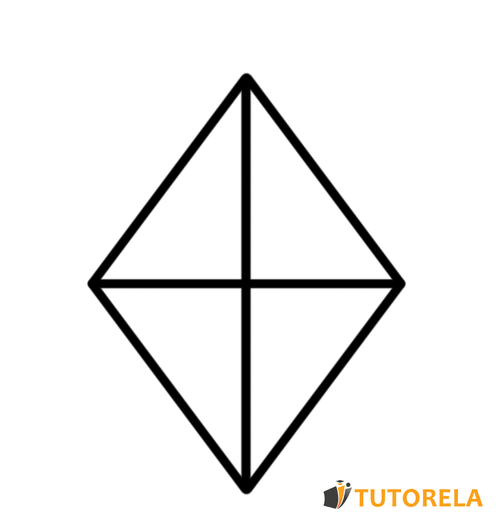What's its name? Rhombus, kite, or diamond? ;)
Rhombus Practice Problems and Solutions for 9th Grade
Master rhombus properties, area formulas, and perimeter calculations with step-by-step practice problems. Learn to identify, prove, and solve rhombus geometry questions.
- Calculate rhombus area using diagonal and side-height formulas
- Find missing angles using equal opposite angles property
- Determine perimeter by multiplying one side length by four
- Prove quadrilaterals are rhombi using perpendicular diagonals
- Apply Pythagorean theorem to find diagonal lengths
- Solve real-world problems involving rhombus measurements
Understanding Rhombus for ninth grade
Rhombus, Kite, or Diamond? The properties, the formulas, and absolutely everything you need to know
Between us... it doesn't matter. It's about that mysterious geometric figure that reminds us of a precious diamond or a deck of cards... Whatever you call it, you must know the properties of this figure and its uniqueness to solve certain geometric problems.
Rhombus

A rhombus is a polygon with four sides of equal length. Its key properties include:
- All sides have equal length:
- Opposite sides are parallel
- Opposite angles are equal
- The diagonals are perpendicular to each other
Area of a rhombus
there are two ways to find the area of a rhombus:
- The lengths of the diagonals are multiplied and divided by .
- One of the sides is multiplied by the height.
Practice Rhombus for ninth grade
Given the rhombus in the figure
What is your area?
Examples with solutions for Rhombus for ninth grade
Look at the rhombus in the figure.
What is the relationship between the marked angles?
Let's remember the different definitions of angles:
Corresponding angles are angles located on the same side of the line that intersects the two parallels and are also situated at the same level with respect to the parallel line they are adjacent to.
Therefore, according to this definition, these are the angles marked with the letter A
Alternate angles are angles located on two different sides of the line that intersects two parallels, and which are also not at the same level with respect to the parallel they are adjacent to.
Therefore, according to this definition, these are the angles marked with the letter B
Answer:
A - corresponding; B - alternate
Given the rhombus in the drawing:
What is the area?
Let's remember that there are two ways to calculate the area of a rhombus:
The first is the side times the height of the side.
The second is diagonal times diagonal divided by 2.
Since we are given both diagonals, we calculate it the second way:
Answer:
14
Look at the rhombus in the figure.
What is its area?
First, let's remember that according to the properties of a rhombus, all sides of a rhombus are equal,
Therefore, if we define the sides of the rhombus with the letters ABCD,
We can argue that:
AB=BC=CD=DA
We use the perimeter formula:
50 = AB+BC+CD+DA
And we can conclude that
4AB=50
(We can also use any other side, it doesn't matter in this case because they are all equal.)
We divide by four and reveal that:
AB=BC=CD=DA = 12.5
Now let's remember the formula for the area of a rhombus: the height times the side corresponding to the height.
We are given the length of the external height 8,
Now, we can replace in the formula:
8*12.5=100
Answer:
100 cm²
Using the rhombus in the drawing:
Calculate the area?
Remember there are two options to calculate the area of a rhombus:
1: The diagonal multiplied by the diagonal divided by 2.
2: The base multiplied by the height.
In the question, we are only given the data for one of the diagonals and one of the sides, which means we cannot use either of the above formulas.
We need to find more data. Let's begin by finding the second diagonal:
Remember that the diagonals of a rhombus are perpendicular to one another, which means that they form a 90-degree angle.
Therefore, all the triangles in a rhombus are right-angled.
Now we can focus on the triangle where the side and the height are given, and we will calculate the third side using the Pythagorean theorem:
Insert the given data:
Now that we have found the second half of the diagonal, we can calculate the area of the rhombus by multiplying the two diagonals together.
Since the diagonals in a rhombus are perpendicular and cross each other, they are equal. Hence, our diagonals are equal:
Therefore, the area of the rhombus is:
Answer:
24
A rhombus has a side length measuring 7 cm.
Is DC equal to 8 cm?
Let's recall the properties of a rhombus. In a rhombus, all sides are equal to each other, therefore DC cannot be equal to 8 cm.
Additionally, in a rhombus, there are 2 pairs of parallel and equal sides. Since the side parallel to AB is CD, it must be equal to 7 cm.
Answer:
No